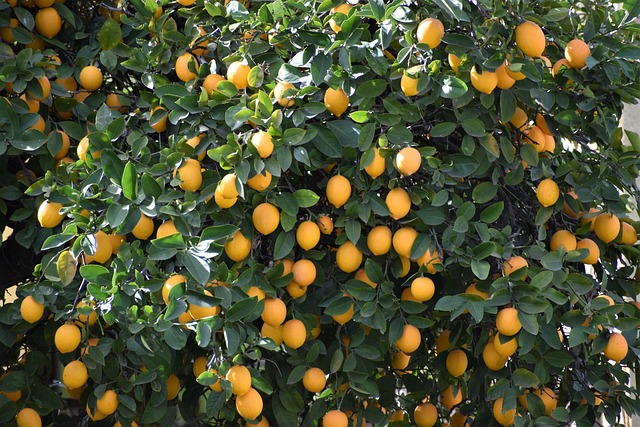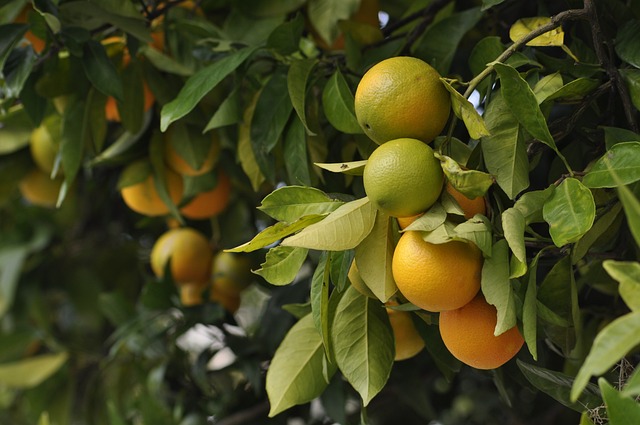In which climatic condition are citrus fruit cultivated? Well, in this post, you’ll get the complete answer with complete information. Citrus fruits are cultivated in sub-tropical conditions.
This fruit is cultivated in a variety of soil types, from sandy loam to clay. In general, lemons, limes, grapefruit, oranges, and tomatoes are produced in the highest quantities in Brazil, China, and the United States.
Trees that produce citrus fruits tend to develop slowly. It might grow to its full height over a period of 10 to 15 years. More than 140 nations, according to the United Nations Conference on Trade and Development, produce citrus fruits. The Northern Hemisphere produces over 70% of the world’s citrus products.
California, Arizona, and Texas are the main states in the United States where citrus fruits are grown for consumption as fresh fruits. Oranges are largely grown in Florida for juice. The US consumes 90% of the oranges produced in Florida.
Note:
Cherries are one of the toughest fruit trees in the low winter temperatures. -2°C damages flowers. Long, cold winters and hot, short summers are required, but with cool nights and moderate springs. Peaches and nectarines are temperate fruit trees that are not particularly cold-tolerant. The growing area extends between latitudes 30 and 40°. Most varieties can be bud damaged at -15°C for peaches and below -4°C for nectarines.
Scope & National Importance Of Citrus:
Due to poor growing conditions, scarce water supplies, and a high prevalence of pests and diseases, citrus agriculture in India faces a number of challenges that necessitate meticulous attention from planting through harvest.
The plants bear fruit such that they can continue to be prolific for at least 15 to 20 years. The adoption of the most recent technologies for citrus commercial agriculture is gaining producers’ attention and interest.
A set of recommended practices for citrus farming in various parts of the nation has been released by the National Research Centre (NRC) for Citrus (ICAR), Nagpur. The NRC for Citrus’ recommendations as well as the opinions and experience of the citrus growers have been taken into account in the current bankable project on citrus.

If you want to know in which climatic condition are citrus fruit cultivated? Just keep an eye on the post.
Technical Requirements Of Citrus Cultivation:
In Which Climatic Condition Are Citrus Fruit Cultivated?
Well, citrus fruits work well in subtropical conditions. It is grown in India. However, it was unable to withstand the temperature that was too low for a long time. Mandarin has adapted to the foothills and grows in Himachal Pradesh, a hilly area in the hills of Assam and Satpura in Nagpur.
Areas with irrigation and a temperature range of 7-47°C are best for growing sweet oranges. So, Citrus fruits are grown in areas characterized by hot dry summers and mild rainy winters.
Soil Condition:
Citrus fruits require deep, well-draining soil with a pH of 6.0 to 7.5. However, changing cultural practices could easily increase the pH from 5.5 to 8.5. Citrus fruits are very sensitive to salt concentrations in soil solutions. A high EC can indicate premature citrus reduction symptoms. Well-drained clay is better than clay. However, it can be planted in hilly areas to semi-arid irrigated areas.
Planting Material & Planting Season:
T-budding is used for both vegetative and reproductive propagation of mandarin citrus. After the start of the monsoon, in the months of July and August, most seedlings are transplanted. The “T” or shield budding method should be used for budding, which is best done in the final week of January or the first week of February.
Land Preparation:
After ploughing, the field needs to be completely levelled. On terraces up against slopes and on such grounds are planted in hilly locations. As a result, high-density planting is feasible since there is more aerial space than in flatlands. Due to their extreme sensitivity to waterlogging and water stagnation during the rainy season, citrus plants. Because of this situation, it is crucial to create drainage channels along the slopes surrounding the orchard that are 3–4 feet deep.
Planting:
During knowing in which climatic conditions are citrus fruit cultivated, you’ve to also know its plantation, irrigation, harvesting, yielding, and other processes. Remove the seeds from the chosen fruit to start citrus trees from the seeds inside. Plant the seeds in moist potting soil 1/2 inch deep after giving them an overnight soak in water. For a few weeks, place the pot in a warm, sunny location with the lid covered until the seeds begin to sprout.
Irrigation:
The irrigation technique enhances fruit size while decreasing fruit drop. In flooded areas, illnesses like root rot and collar rot can develop. High-frequency light irrigation is advantageous.
The amount of water used and the frequency of irrigation is influenced by the development stage and soil condition. Micro irrigation techniques conserve more than just water and nutrients. It also guarantees good fruit retention in conditions where water is not a problem, such as during the critical crop growth stages in March and April.
Insects Pests Of Citrus:
Poor fruit set, fruit drop at both the bearing and mature stages, bark removal, girdling, stem tunnelling, etc. cause plant deviancy. Depending on the type of pest infestation, spraying with pesticides such as monocrotophos, dimethoate, quinalphops, etc. has proven to be beneficial in the majority of situations.
Diseases Of Citrus Plants:
Twig blight, gummosis, damping-off, root, and collar rot are the most commonly reported diseases. Depending on the kind of infection, the damaged plant should be sprayed with Redomil MZ 72, Baviston, Benomyl, etc.
Harvesting:
Sweet oranges and mandarins both have two primary crops. One is named Ambiabahar (mango blossoming), whose flowering takes place in January (during mango flowering, thus the name Ambia), and whose fruits are available from October to December.
Another crop is Mrigbahar (Monsoon bloom), which flowers in June and July and has fruit picked in February and April. Mandarins and sweet oranges typically reach maturity between 240 and 280 days after planting.
Fruits that have reached the color break stage are picked up every 2 or 3 days for 10 to 14 days. Lemons and limes mature around 150–160 days. There could be 2 or 3 crops of limes and lemons per year.
Yield:
Mandarin: Starts in the fifth year and stabilizes in the eighth year, with each tree bearing about 50 fruits. After stabilization, the average production per tree is 700–800 fruits.
Sweet orange: Starts in the fifth year and stabilizes in the eighth year, producing 40 to 50 oranges per tree. After stabilization, each tree produces 500–600 fruits on average.
Lime/Lemon: Starts in the third year with 50–60 fruits per tree and reaches a stable size in the eighth year. After stabilization, each tree produces 1000–1500 fruits on average.
A plantation’s economic lifespan is 15 to 25 years.
Post-Harvest Diseases:
It is advised to apply Ethephon@250 ppm coupled with 1% calcium acetate as a foliar spray at the maturity stage to give the fruits a consistent yellow-orange color. Ethylene gas can be used to de-green and develop color in sweet oranges and mandarins. A
A change in color can be seen in around 48 hours at temperatures of 6-7°C, 5-10 ppm of ethylene, and 90-95% RH in a de-greening chamber. There are available cold storage settings for keeping certain citrus fruits for an extended period of time.
Citrus is pre-cooled using a forced air system. The following list includes the storage requirements for each category. Oranges can be packaged in CFB boxes that are 30 cm x 30 cm x 30 cm and are highly ventilated.
Important States Producing Major Citrus Fruits In India:
Citrus fruits from different states—
- Sweet orange: Punjab, Rajasthan, Uttar Pradesh
- Mandarin: Maharastra, Madhya Pradesh, North Eastern region, Punjab, Rajasthan, West Bengal, and Sikkim.
- Acid lime: Rajasthan, Andhra Pradesh, Uttar Pradesh, Karnataka, Gujrat, Maharashtra, Madhya Pradesh.
- Grapefruit: Andhra Pradesh.
- Lemon: Assam, U.P, Gujrat, Andhra Pradesh.
- Pummelo: NEH, Assam, Andhra Pradesh.
Final Word:
Hope you got the answer about in which climatic condition are citrus fruit cultivated. So, Citrus tree species are subtropical; they thrive in warm regions, endure drought, and are extremely sensitive to frost. They thrive in hardiness zones 9 to 11 according to the United States Department of Agriculture. Lemon trees may survive in less-than-ideal conditions, but fruit yield suffers.
